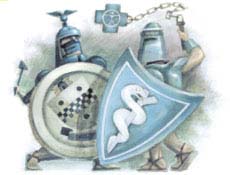While serving as a hospital administrator for over twenty years, I was aware of numerous people who had died in the emergency room because they had no insurance, had not yet qualified for Medicaid and were terrified that the cost of care would force them to live on the street. Consequently, they waited too long to come in for treatment, and they died.
 Modern Healthcare’s August 22nd edition has listed the 100 Most Influential People in Healthcare in 2011. (Somehow they’ve missed me again.) They’ve listed Republican Congressman Paul Ryan of Wisconsin as the number one most influential person, and the Democratic Governor of Vermont, Peter Shumlin, as number two. Ryan is interested in a complete re-make of the Medicare and Medicaid programs, and Shumlin wants to move the citizens of the State of Vermont to a government-run, single-payer system.
Modern Healthcare’s August 22nd edition has listed the 100 Most Influential People in Healthcare in 2011. (Somehow they’ve missed me again.) They’ve listed Republican Congressman Paul Ryan of Wisconsin as the number one most influential person, and the Democratic Governor of Vermont, Peter Shumlin, as number two. Ryan is interested in a complete re-make of the Medicare and Medicaid programs, and Shumlin wants to move the citizens of the State of Vermont to a government-run, single-payer system.
Needless to say, these are very different views. It’s interesting that they both agree that employer-based insurance should be eliminated, so that neither portability nor employment is an issue. They differ in that Ryan believes that each individual citizen should receive a refundable tax credit for healthcare and that providers should compete based upon quality, price and outcomes. Shumlin, on the other hand, wants to do away with “fee for service healthcare,” but clearly understands the American’s public’s concern about government-run anything, and even says, “Government has gotten it wrong, every single time.”
According to Modern Healthcare, both want to fix the system that is bankrupting the nation. Ryan wants to “maintain a world class system built on innovation and excellence,” while Shumlin wants that single payer system to eliminate waste, administrative overhead and insurance company profits. It is Shumlin’s contention that enacting all of the Tea Party cuts and taxing the wealthy would still lead to the same federal budget challenges in the trillions of dollars that we face now.
Ryan wants to cut $750 billion in Medicare spending by making the allocation a block grant. People like Rose Ann DeMoro, executive director of the AFL-CIO- affiliated National Nurses United labor union say, “The market isn’t magic and it doesn’t trickle down…the Paul Ryans of the world don’t want a society. They want individuals and corporations to make ungodly amounts of money.”
And so the debate continues. There is no magic elixir that will fix this without huge disagreements and turf battles. As the Obama legislation began to unfold, the initial reaction from many within his own party was that his administration had “sold out” to Big Pharma and numerous other lobbies, and, as the Republican plan continued to be unveiled, the response was similar to DeMoro’s, because it was so heavily skewed toward big business and the free market, while providing only marginal assistance for the underserved of this nation.
 Ironically, as I look out my window and then drive a block from my apartment in Pittsburgh, I see another new “colony” of homeless people living under the bridge, and as I round the corner under Route 279N, there is a virtual apartment building under that road comprised of sheets and blankets hung to create separate partitions for the individual homeless people to live. At the next light leading to the North Side, a 30ish young mom begs on the corner for money for her kids, and two blocks past her is a homeless Veteran asking for money as well.
Ironically, as I look out my window and then drive a block from my apartment in Pittsburgh, I see another new “colony” of homeless people living under the bridge, and as I round the corner under Route 279N, there is a virtual apartment building under that road comprised of sheets and blankets hung to create separate partitions for the individual homeless people to live. At the next light leading to the North Side, a 30ish young mom begs on the corner for money for her kids, and two blocks past her is a homeless Veteran asking for money as well.
In the midst of all of this, the $9 billion UPMC battle with the nearly $4 billion Highmark juggernaut continues over an insurance company owning a hospital, and a hospital owning an insurance company. Surely, in the richest country in the world, there are answers to these challenges that do not bankrupt the pharmaceutical or insurance companies, do not make our physicians second class citizens, and do not close two thousand small and medium sized hospitals while still providing care for everyone.





 My apartment is about two blocks away from
My apartment is about two blocks away from 








